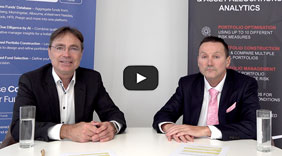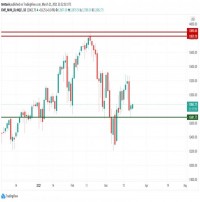|
|
Nikan has over 14 years experience in leading Wall Street and City
firms on the buy and sell-side including Lehman Brothers, Goldman-Sachs,
Deutsche Bank, Sanford Bernstein Alliance, Citadel and Nomura where he is
currently Head of European Rates Strategy. He has worked in a variety of
primarily technical or quantitative fixed income roles from Rates & Hybrids
Structuring to Rates Strategy and Quantitative Modelling to Asset Allocation and
Risk Management to Prepayment Analysis and Securitization and Capital Markets.
Education: PhD Mathematics (Courant Institute, NYU), Asst Prof University of
Illinois.
The Structure: At the risk of being mundane, but for the sake of
completeness, we wanted to describe a principal protected structured product in
greater detail. How can we have benefits with no downside risk in Islamic
Finance? Well, the answer is really quite trivial.
For one thing, we have already talked about Shariah-compliant call options,
specifically call options thru debt set-off (see
reference link). This is just one of many possible mechanisms for a Shariah
compliant call option to be manufactured. Additional methods for generating
calls (some are yet to be discussed here) include he following:
-
Set-off (as discussed, combining Salam and Murabaha contracts with
the same counterparty together with a contractual set-off)
- Bay' al Arbun (downpayment with revocation sale, as allowed by Hanbalis,
now with much wider acceptance)
- Wa'd (which will be familiar to the concepts unilateral promise,
promissory note, estoppel)
There are probably less natural ways of synthesizing calls through
profit-rate swaps (i.e. PRS - rolling and offsetting murabahas) and
total-return swaps or Islamic swaps (i.e. TRS - rolling bilateral Wa'ad).
Both of these are means of synthesizing a swap which can be used to generate a
series of more or less risky cashflows in place of a simple call option.
Figure 1: Sample Principal Protected Note Flowchart
Source: Author's own
A conventional principal protected note is merely the combination of a
zero-coupon bond and some call options, with their maturity and exercise set to
be identical. So if we invest $100 and the zero rate for 5Y is X%, the price of
the zero is 100/(1+X%)**5 and the remainder is invested into calls, typically
struck at spot. Depending on the prevailing rates and underlying volatility, it
may be possible to give more or less than 100% of the upside of the underlying
(which can be equities, commodities, etc).
The last thing needed for the structure is a zero-coupon bond/money market
instrument. This can be obtained through a number of ways, including:
- Commodity Murabaha/Tawarruq'
- Bay al Inah (sale at spot, resale with deferment and increase)
Hence an Islamic principal protected note is the combination of a Murabaha
and Islamic call options, with matching maturity and exercise.
Notes for Prospective Buyers/Remarketers
Once we let the cat out of the hat with a Shariah-compliant call option, and
we've had a risk-free rate/money-market/zero-coupon bond for some time,
combining the two was inevitable. In fact, the distinction between the risk-free
cashflow (the Murabaha) and the more leveraged and technically challenging risky
portion (with a floored downside portion) is more than trivial. This is because
some redistributers choose to source only the risky component from international
investment banks, and effectively issue their own zero-coupons, packaging them
together at the final stage. It would be possible as well to use this Murabaha +
Risky Investment (with floored downside) as a basic model for CPPI-based
strategies (constant proportional portfolio insurance, essentially a portfolio
strategy similar to dynamic hedging/replication of options, something we will go
into more detail in a future article).
The payout will be the original principal + M *max(Price(T)-Strike,0), where
Price(T) is the price of the equity/commodity at maturity of the note, Strike is
usually set to Price(0), today's price, but can be set wherever we like
(slightly harder from a Shariah perspective but should be just fine), and M is
the multiplier. We can get anywhere from say around 70% to 120% multipliers (for
instance 70%-120% of the upside of the FTSE 100). The multiplier is usually the
only figure that can be manipulated, so we must look to it and compare.
While this may appear wonderful to some, we should comment that, unlike more
vanilla products (e.g., straight call options or zero-coupon bonds), pricing is
not as easy to replicate and it is not absolutely trivial to know whether you
are getting ripped off or not. Some useful guidelines:
- Know what you can about pricing: Try to price the call (with correct
strike) and zero independently. Pricing the zero should generally be the easiest
part.
- If the underlying is liquid and calls are traded on it (e.g., calls on oil,
calls on gold, etc), then it is likely that only at-the-money (ATM) options are
active (i.e., ATM struck at the forward price). Spot-struck options are
generally less liquid, involve pricing on a skew, which you as customer are not
as aware of. Expect hidden fees.
- If the underlying is liquid but calls are not actively traded (e.g., DJIM
Index), the bank will use calls on whatever similar futures that they can get
ahold of. The basis or the fact that these two index that they can use to hedge
and that the underlying index in the note do not mimic each other exactly--they
will charge extra for that. So on top of the skew, you get charged for their
inability to hedge perfectly.
- Make sure you know whether dividends are paid to you or are not. Does the
index accrue with no dividends? It makes it cheaper for them to pay it to you,
and they should pay you that much more (i.e., the multiplier on the upside
should be larger, e.g., S&P offers a price index with no dividends, and a total
return index. Owning the market is more like owning the total return index, but
most structured products pay the price index and consequently can usually pay
higher multiples, e.g., 115%, 120%, etc).
- It's oftentimes trivial to price a Treasury, Gilt, or Bund zero-coupon bond of
the same tenor. It may not be as easy to price a zero-coupon bond of the
underlying counterparty.
- Shop around: Note that even though it seems like rocket science, it
isn't. Every bank and their brother does this same deal. Smart users will ask
for several quotes, even of Shariah-compliant products like this (vanilla
shariah-compliant). Banks are used to giving quotes for reverse-engineered
products (i.e., customer describes payout, bank finds price). Banks charge
different amounts: traders reserve different amounts of P&L for possible
rehedging costs and model errors (releasing it gradually as the hedging costs
turn out to be lower than worst-case) and sales-people take varying PCs.
Redistributers are usually upfront. By the time the end-user has it, 2 points to
10 points could have been taken from the mid-price (really!). That is, you paid
10% upfront for the privilege of running this simple strategy. Smart buyers will
ask for quotes from 10 banks, pick the best price and expect to pay 1%-2%.
- Beware Winner's Curse and Counterparty Risk: Sometimes the best
price has a string attach--the bank themselves didn't charge enough to rehedge
the product. This is not your problem until it may actually be your problem. Be
careful and concerned about counterparty risk. Seemingly safe notes turn out to
have a large credit component which could result in a loss of principal (if the
note issuer defaults). Know the terms for the risky-cashflow (which is
oftentimes generated by the investment bank, usually different from the issuer)
and what happens in case of credit events. Usually it is the issuer who takes on
the credit risk underlying the risky cashflow and insists on collateralization,
but this is not the case for certain types of structures (e.g., Repacks) and it
makes sesne to be sure of all the contingencies.
- Know what will affect repricing: As opposed to the payoff (the
pricing before maturity) something of importance for client reports, if it was
bought on a margin which doesn't sound so shariah-compliant anyway, or if you
might seek to unwind the product before final maturity. Lower prices do not
necessarily imply the payoff is really impaired of course:
- Credit Spreads. Whose Zero is it anyway? The commodity was bought and sold
and now you have credit exposure to a large German or Swiss bank or worse yet,
an American bank. If they get downgraded, you better believe the pricing of your
product (prior to maturity) will look bad. If they file for Chapter 11, it could
look far worse.
- If volatility drops and suddenly the world looks less risky, your valuations
may suffer. You are long an option and option prices drop when vol drops. Your
pricing before maturity depends very much on vol and it dynamics and the whole
skew shape (interaction between the underlying price levels, strikes and vol).
- If prices rise of course, you are long a call and should expect your
valuations to rise. This may be less than you think since the rise will be
proportional to the call's Delta (calculated from Black-Scholes or some other
fancy option valuation model). The more ITM (in the money) your option is, i.e.,
the more underlyings have risen in the past, the greater your price sensitivity.
The more OTM (out of the money) your option is, i.e., the more you've lost, the
lesser your price sensitivity. Higher volatility will lessen sensitivities in
general.
It pays to read up on option pricing, to get an intuition for how it works in
the real world.
Structured Product, whether we take the view that it is Islamically
acceptable or not, has both some pros and cons. More importantly, it is pushed
by investment banks often because it is exactly what the clients want, but at
the same time because the fees can be juicy, the pricing is often opaque, and
the customers are not always up to snuff. Make sure you are.
Your feedback and comments are very important to us, please feel free to
contact the author
via email.
|






 RSS
RSS









